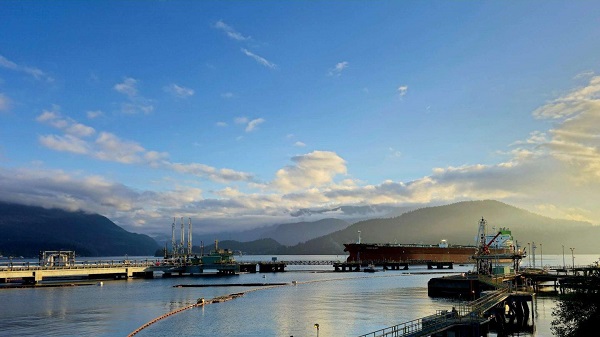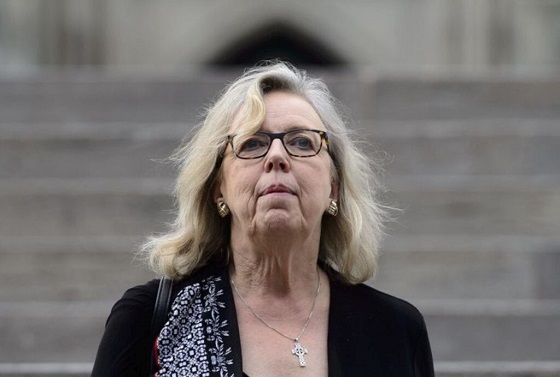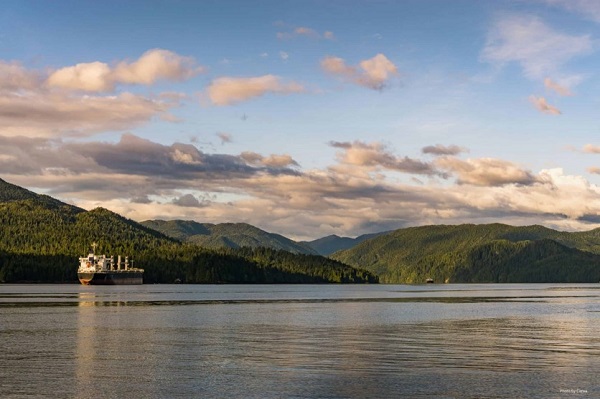Alberta
Alberta Relaunch stage 1 mostly a go for Thursday – Restrictions for Calgary and Brooks
From the Province of Alberta
Alberta is ready for relaunch
Stage one – all areas of Alberta except cities of Calgary and Brooks
- With increased infection prevention and control measures to minimize the risk of increased transmission of infections, some businesses and facilities can start to resume operations on May 14 in all areas except the cities of Calgary and Brooks:
- Retail businesses, such as clothing, furniture and bookstores. All vendors at farmers markets will also be able to operate.
- Museums and art galleries.
- Daycares and out-of-school care with limits on occupancy.
- Hairstyling and barbershops.
- Cafés, restaurants, pubs and bars will be permitted to reopen for table service only at 50 per cent capacity.
- Day camps, including summer school, will be permitted with limits on occupancy.
- Post-secondary institutions will continue to deliver courses; however, there will be more flexibility to include in-person delivery once the existing health order prohibiting in-person classes is lifted.
- Places of worship and funeral services, if they follow specific guidance already online.
- The resumption of some scheduled, non-urgent surgeries will continue gradually.
- Regulated health professions are permitted to offer services as long as they continue to follow approved guidelines set by their professional colleges.
- In Calgary and Brooks, the relaunch will be gradual over 18 days due to higher COVID-19 case numbers in these communities.
Stage one – cities of Calgary and Brooks
Opening May 14:
- Retail businesses, such as clothing, furniture and bookstores. All vendors at farmers markets will also be able to operate.
- Museums and art galleries.
- Daycares and out-of-school care with limits on occupancy.
- The resumption of some scheduled, non-urgent surgeries will continue gradually.
- Regulated health professions are permitted to offer services as long as they continue to follow approved guidelines set by their professional colleges.
Opening May 25:
- Hairstyling and barbershops.
- Cafés, restaurants, pubs and bars will be permitted to reopen for table service only at 50 per cent capacity.
Opening June 1:
- Day camps, including summer school, will be permitted with limits on occupancy.
- Post-secondary institutions will continue to deliver courses; however, there will be more flexibility to include in-person delivery once the existing health order prohibiting in-person classes is lifted.
- Places of worship and funeral services, if they follow specific guidance already online.
The new alberta.ca/bizconnect web page provides business owners with information on health and safety guidelines for general workplaces, as well as sector-specific guidelines for those able to open in stage one. Businesses allowed to reopen during stage one will be subject to strict infection prevention and control measures, and will be carefully monitored for compliance with public health orders. It will be up to each business operator to determine if they are ready to open and ensure all guidance has been met.
Physical distancing requirements of two metres remain in place through all stages of relaunch and hygiene practices will continue to be required of businesses and individuals, along with instructions for Albertans to stay home when exhibiting symptoms such as cough, fever, shortness of breath, runny nose, or sore throat. Albertans are also encouraged to wear non-medical masks when out in public places where keeping a distance of two metres is difficult.
Still not permitted in stage one:
- Gatherings of more than 15 people unless otherwise identified in public health orders or guidance.
- Gatherings of 15 people or fewer must follow personal distancing and other public health guidelines.
- Arts and culture festivals, major sporting events and concerts, all of which involve close physical contact.
- Movie theatres, theatres, pools, recreation centres, arenas, spas, gyms and nightclubs will remain closed.
- Services offered by allied health disciplines like acupuncture and massage therapy.
- Visitors to patients at health-care facilities will continue to be limited; however, outdoor visits are allowed with a designated essential visitor and one other person (a group of up to three people, including the resident), where space permits. However, physical distancing must be practised and all visitors must wear a mask or some other form of face covering.
- In-school classes for kindergarten to Grade 12 students.
Recommendations:
- Travel outside the province is not recommended.
- Remote working is advised where possible.
- Encourage Albertans in Calgary and Brooks to wait to access services upon reopening in their communities rather than travelling for services.
- Albertans are encouraged to download the ABTraceTogether mobile contact tracing app and use it when in public.
Progression to stage two will be determined by the success of stage one, considering health-care system capacity, hospitalization and intensive care unit (ICU) cases, and infection rates. For more information, visit alberta.ca/RelaunchStrategy.
Quick facts
- Relaunch stages will include an evaluation and monitoring period to determine if restrictions should be adjusted. Triggers that will inform decisions on the lessening or tightening of restrictions include hospitalizations and intensive care unit (ICU) occupancy.
- Confirmed cases, the percentage of positive results and the rate of infection will be monitored on an ongoing basis to inform proactive responses in localized areas of the province.
- Decisions will be applied at both provincial and local levels, where necessary. While restrictions are gradually eased across the province, an outbreak may mean that they need to be strengthened temporarily in a local area.
- The most important measure Albertans can take to prevent respiratory illnesses, including COVID-19, is to practise physical distancing and good hygiene.
- This includes cleaning your hands regularly for at least 20 seconds, avoiding touching your face, coughing or sneezing into your elbow or sleeve, and disposing of tissues appropriately.
Alberta
Premier Smith: Canadians support agreement between Alberta and Ottawa and the major economic opportunities it could unlock for the benefit of all

From Energy Now
By Premier Danielle Smith
Get the Latest Canadian Focused Energy News Delivered to You! It’s FREE: Quick Sign-Up Here
If Canada wants to lead global energy security efforts, build out sovereign AI infrastructure, increase funding to social programs and national defence and expand trade to new markets, we must unleash the full potential of our vast natural resources and embrace our role as a global energy superpower.
The Alberta-Ottawa Energy agreement is the first step in accomplishing all of these critical objectives.
Recent polling shows that a majority of Canadians are supportive of this agreement and the major economic opportunities it could unlock for the benefit of all Canadians.
As a nation we must embrace two important realities: First, global demand for oil is increasing and second, Canada needs to generate more revenue to address its fiscal challenges.
Nations around the world — including Korea, Japan, India, Taiwan and China in Asia as well as various European nations — continue to ask for Canadian energy. We are perfectly positioned to meet those needs and lead global energy security efforts.
Our heavy oil is not only abundant, it’s responsibly developed, geopolitically stable and backed by decades of proven supply.
If we want to pay down our debt, increase funding to social programs and meet our NATO defence spending commitments, then we need to generate more revenue. And the best way to do so is to leverage our vast natural resources.
At today’s prices, Alberta’s proven oil and gas reserves represent trillions in value.
It’s not just a number; it’s a generational opportunity for Alberta and Canada to secure prosperity and invest in the future of our communities. But to unlock the full potential of this resource, we need the infrastructure to match our ambition.
There is one nation-building project that stands above all others in its ability to deliver economic benefits to Canada — a new bitumen pipeline to Asian markets.
The energy agreement signed on Nov. 27 includes a clear path to the construction of a one-million-plus barrel-per-day bitumen pipeline, with Indigenous co-ownership, that can ensure our province and country are no longer dependent on just one customer to buy our most valuable resource.
Indigenous co-ownership also provide millions in revenue to communities along the route of the project to the northwest coast, contributing toward long-lasting prosperity for their people.
The agreement also recognizes that we can increase oil and gas production while reducing our emissions.
The removal of the oil and gas emissions cap will allow our energy producers to grow and thrive again and the suspension of the federal net-zero power regulations in Alberta will open to doors to major AI data-centre investment.
It also means that Alberta will be a world leader in the development and implementation of emissions-reduction infrastructure — particularly in carbon capture utilization and storage.
The agreement will see Alberta work together with our federal partners and the Pathways companies to commence and complete the world’s largest carbon capture, utilization and storage infrastructure project.
This would make Alberta heavy oil the lowest intensity barrel on the market and displace millions of barrels of heavier-emitting fuels around the globe.
We’re sending a clear message to investors across the world: Alberta and Canada are leaders, not just in oil and gas, but in the innovation and technologies that are cutting per barrel emissions even as we ramp up production.
Where we are going — and where we intend to go with more frequency — is east, west, north and south, across oceans and around the globe. We have the energy other countries need, and will continue to need, for decades to come.
However, this agreement is just the first step in this journey. There is much hard work ahead of us. Trust must be built and earned in this partnership as we move through the next steps of this process.
But it’s very encouraging that Prime Minister Mark Carney has made it clear he is willing to work with Alberta’s government to accomplish our shared goal of making Canada an energy superpower.
That is something we have not seen from a Canadian prime minister in more than a decade.
Together, in good faith, Alberta and Ottawa have taken the first step towards making Canada a global energy superpower for benefit of all Canadians.
Danielle Smith is the Premier of Alberta
Alberta
A Memorandum of Understanding that no Canadian can understand

From the Fraser Institute
The federal and Alberta governments recently released their much-anticipated Memorandum of Understanding (MOU) outlining what it will take to build a pipeline from Alberta, through British Columbia, to tidewater to get more of our oil to markets beyond the United States.
This was great news, according to most in the media: “Ottawa-Alberta deal clears hurdles for West Coast pipeline,” was the top headline on the Globe and Mail’s website, “Carney inks new energy deal with Alberta, paving way to new pipeline” according to the National Post.
And the reaction from the political class? Well, former federal environment minister Steven Guilbeault resigned from Prime Minister Carney’s cabinet, perhaps positively indicating that this agreement might actually produce a new pipeline. Jason Kenney, a former Alberta premier and Harper government cabinet minister, congratulated Prime Minister Carney and Premier Smith on an “historic agreement.” Even Alberta NDP Leader Naheed Nenshi called the MOU “a positive step for our energy future.”
Finally, as Prime Minister Carney promised, Canada might build critical infrastructure “at a speed and scale not seen in generations.”
Given this seemingly great news, I eagerly read the six-page Memorandum of Understanding. Then I read it again and again. Each time, my enthusiasm and understanding diminished rapidly. By the fourth reading, the only objective conclusion I could reach was not that a pipeline would finally be built, but rather that only governments could write an MOU that no Canadian could understand.
The MOU is utterly incoherent. Go ahead, read it for yourself online. It’s only six pages. Here are a few examples.
The agreement states that, “Canada and Alberta agree that the approval, commencement and continued construction of the bitumen pipeline is a prerequisite to the Pathways project.” Then on the next line, “Canada and Alberta agree that the Pathways Project is also a prerequisite to the approval, commencement and continued construction of the bitumen pipeline.”
Two things, of course, cannot logically be prerequisites for each other.
But worry not, under the MOU, Alberta and Ottawa will appoint an “Implementation Committee” to deliver “outcomes” (this is from a federal government that just created the “Major Project Office” to get major projects approved and constructed) including “Determining the means by which Alberta can submit its pipeline application to the Major Projects Office on or before July 1, 2026.”
What does “Determining the means” even mean?
What’s worse is that under the MOU, the application for this pipeline project must be “ready to submit to the Major Projects Office on or before July 1, 2026.” Then it could be another two years (or until 2028) before Ottawa approves the pipeline project. But the MOU states the Pathways Project is to be built in stages, starting in 2027. And that takes us back to the circular reasoning of the prerequisites noted above.
Other conditions needed to move forward include:
The private sector must construct and finance the pipeline. Serious question: which private-sector firm would take this risk? And does the Alberta government plan to indemnify the company against these risks?
Indigenous Peoples must co-own the pipeline project.
Alberta must collaborate with B.C. to ensure British Columbians get a cut or “share substantial economic and financial benefits of the proposed pipeline” in MOU speak.
None of this, of course, addresses the major issue in our country—that is, investors lack clarity on timelines and certainty about project approvals. The Carney government established the Major Project Office to fast-track project approvals and provide greater certainty. Of the 11 project “winners” the federal government has already picked, most either already had approvals or are already at an advanced stage in the process. And one of the most important nation-building projects—a pipeline to get our oil to tidewater—hasn’t even been referred to the Major Project Office.
What message does all this send to the investment community? Have we made it easier to get projects approved? No. Have we made things clearer? No. Business investment in Canada has fallen off a cliff and is down 25 per cent per worker since 2014. We’ve seen a massive outflow of capital from the country, more than $388 billion since 2014.
To change this, Canada needs clear rules and certain timelines for project approvals. Not an opaque Memorandum of Understanding.
-

 National16 hours ago
National16 hours agoMedia bound to pay the price for selling their freedom to (selectively) offend
-

 Bruce Dowbiggin15 hours ago
Bruce Dowbiggin15 hours agoSometimes An Ingrate Nation Pt. 2: The Great One Makes His Choice
-

 Business4 hours ago
Business4 hours agoRecent price declines don’t solve Toronto’s housing affordability crisis
-

 COVID-192 days ago
COVID-192 days agoUniversity of Colorado will pay $10 million to staff, students for trying to force them to take COVID shots
-

 Business2 days ago
Business2 days agoOil tanker traffic surges but spills stay at zero after Trans Mountain Expansion
-

 Energy2 days ago
Energy2 days agoELZABETH MAY HAS IT WRONG: An Alberta to Prince Rupert Oil Pipeline Will Contribute to Greater Global Oil Tanker Safety
-

 National2 days ago
National2 days agoAlberta will use provincial laws to stop Canadian gov’t from trying to confiscate legal firearms
-

 Energy6 hours ago
Energy6 hours agoThe Trickster Politics of the Tanker Ban are Hiding a Much Bigger Reckoning for B.C.




